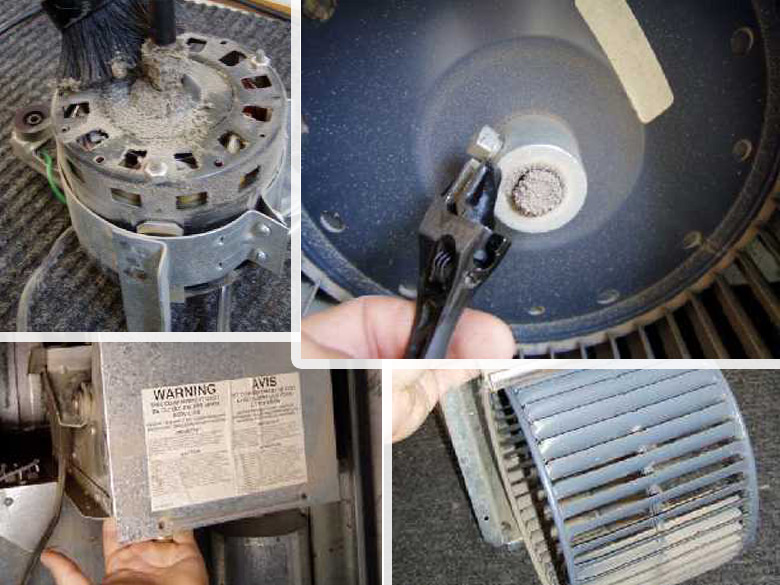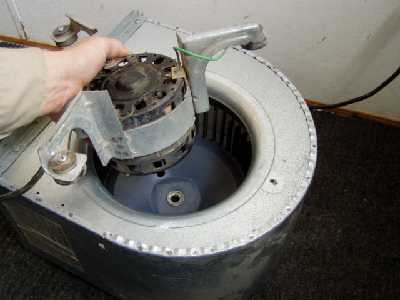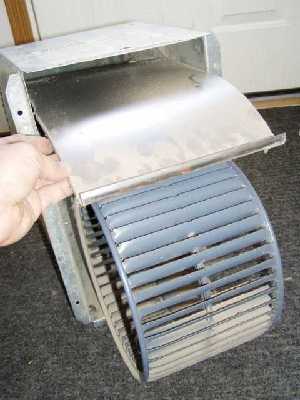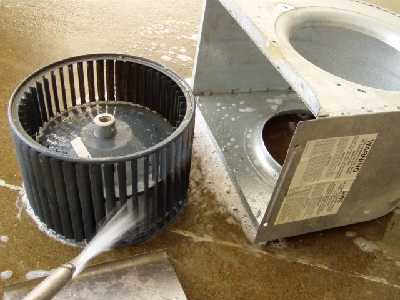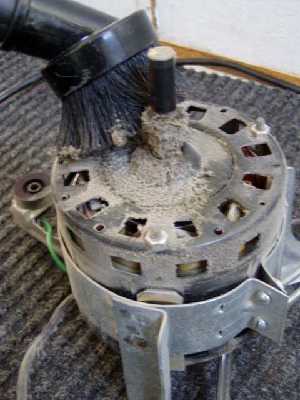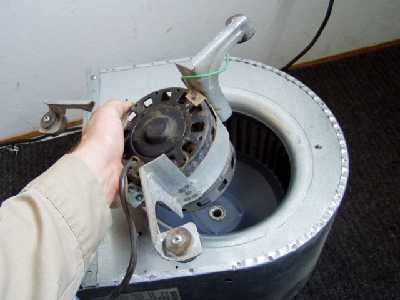Step 1: Turn OFF power to furnace at service panel breaker box.
Flip breakers inside furnace OFF (if applicable). Turn furnace/fan switches inside the furnace to OFF and turn the thermostat to OFF.
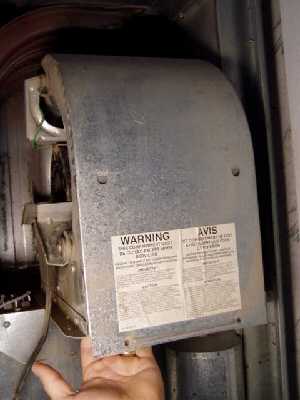
First, disconnect fan motor wiring harness connector. Draw beforehand which way the wiring harness was hooked up. Remove any screws directly holding the fan housing lips on each side of housing and slide it out. DO NOT TOUCH the terminals on the capacitor. The capacitor is commonly found attached to the side of the blower housing. Be careful not to crimp, kink or damage any refrigerant lines which may be along the side of furnace and slightly in the way (mainly for blowers located at the bottom of the furnace). Protect refrigerant lines with a piece of cardboard.
Step 3: Discharge and remove the capacitor if attached to the housing.
The capacitor is often fastened to the side of the blowing housing. If you do not see it, you may possibly have a shaded pole motor which does not require a capacitor so skip to Step 4. Or the capacitor may possibly be located elsewhere in the furnace. If so, skip to step 4.
If your capacitor is located on the side of the blower housing, mark where the two wires connect to the capacitor. Using a long needlenose pliers with electrical-insulated grips, remove the wires from capacitor. When removing, be careful and be sure to NOT TOUCH THE TERMINALS. If you need to discharge the capacitor, use only a resistor-type jumper to safely discharge it. Only discharge if experienced in using the resistor-type jumper. Otherwise, just don’t touch the terminals. Then remove the capacitor carefully.
Step 4: Remove the blower wheel and motor from housing.
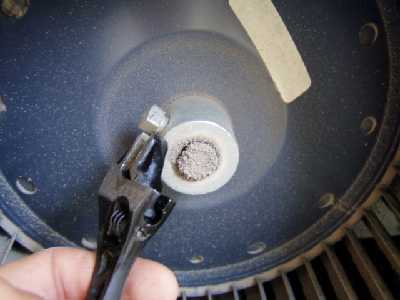
Reach into squirrel cage and mark where the squirrel cage hub sets on the fan shaft. Mark it carefully as it must be returned to the exact spot. Loosen the set screw in hub of squirrel cage (blower wheel).
Turn housing over, remove the bracket bolts to motor. Turn back over, take a piece of 2×4 wood, place against shaft and gently bump the motor shaft/motor out of blower wheel.
Then on the bottom of blower housing, there should be a section of housing that deflects the air and held in place with 2-4 screws. It will have to be moved or lifted back to remove the blower wheel. Do not bend it out of shape and beware how this comes apart throughout. Pictures from beginning to end are great for reference.
Step 5: Clean blower wheel. Go to a car wash that has spray wands. Spray blower wheel and blower housing (snail shell) with 1 full cycle of soap and 1 full cycle of rinse. You don’t want too much water pressure from the wand as it may damage the fins. On the blower wheel fins, you’ll find metal clips. These are balancers and care should be taken not to damage or remove them. Caution — the fins are sharp so be careful. Allow to dry completely.
Step 6: Clean fan motor. Use a soft bristled brush to brush off fan motor and vacuum the outer fan motor ends. Oil if necessary.
Step 7: Reinstall blower wheel and motor into housing. Reinstall by reversing the removal steps. Make sure all is tight, but don’t overtighten. Then after the wheel/motor/housing is back together, spin wheel in correct direction and make sure it doesn’t wobble or knock/rub against anything. Also make sure the airflow is coming out through the bottom opening of blower housing without restriction. Don’t forget to install and reconnect the capacitor.
Step 8: Reinstall blower assembly in furnace. First, brush and vacuum gently inside the furnace before reinstalling the blower assembly. Then reinstall the blower assembly by reversing the procedure in step 2.
Step 9: Finish up. Hook up wires, clean or change filter, vacuum and brush off a-coil if applicable using a soft-bristled brush. Old-style toilet brushes are great for brushing off a-coils. Turn on breakers and thermostat. Run the furnace through a few cycles before leaving it unattended.
Learn More About Heater Maintenance & Troubleshooting
Find Furnace Parts

